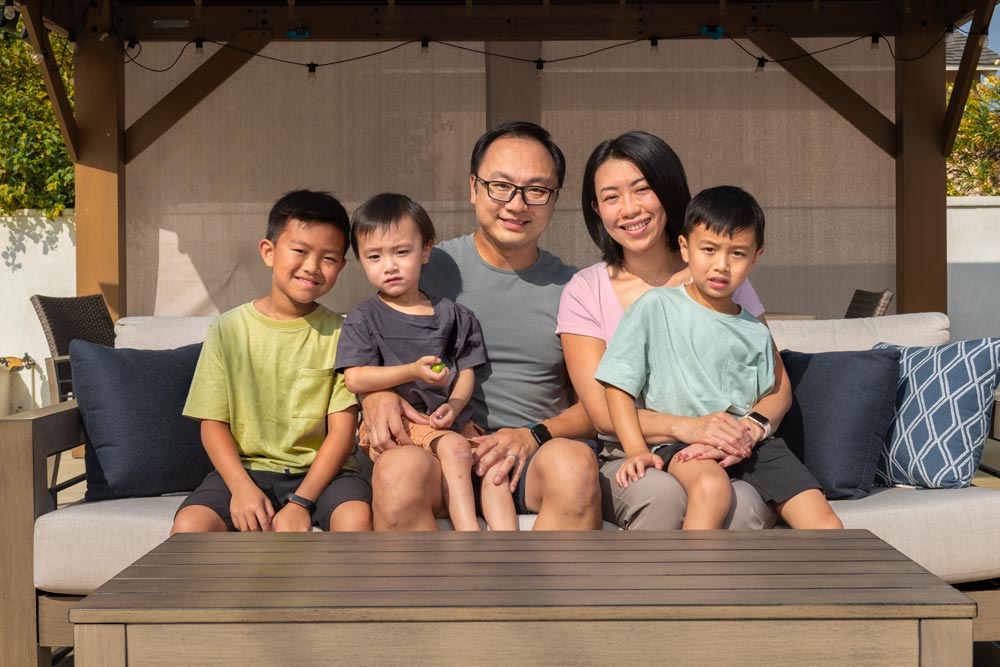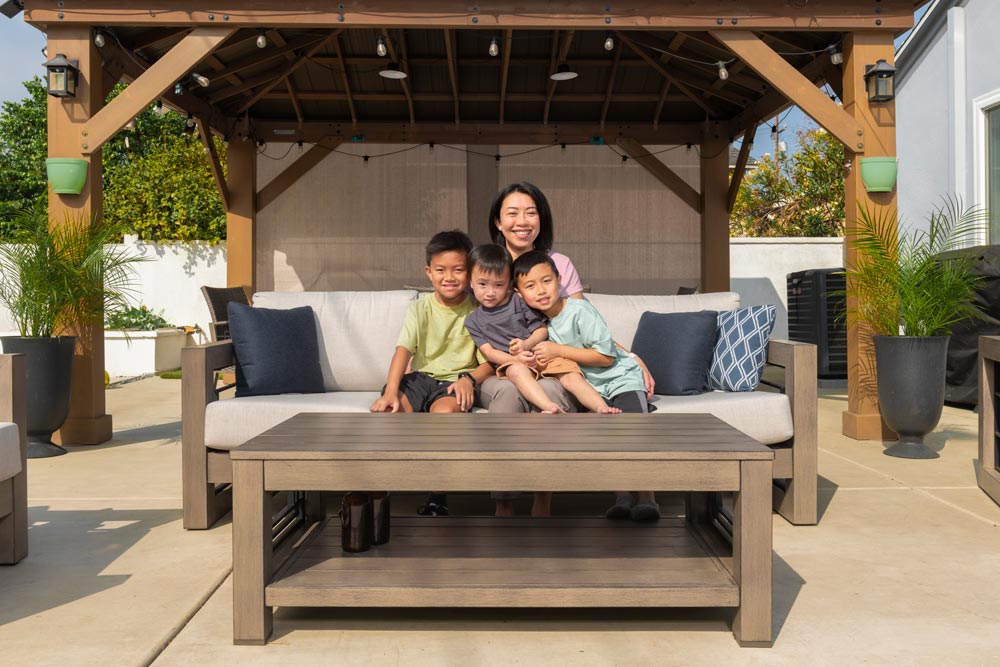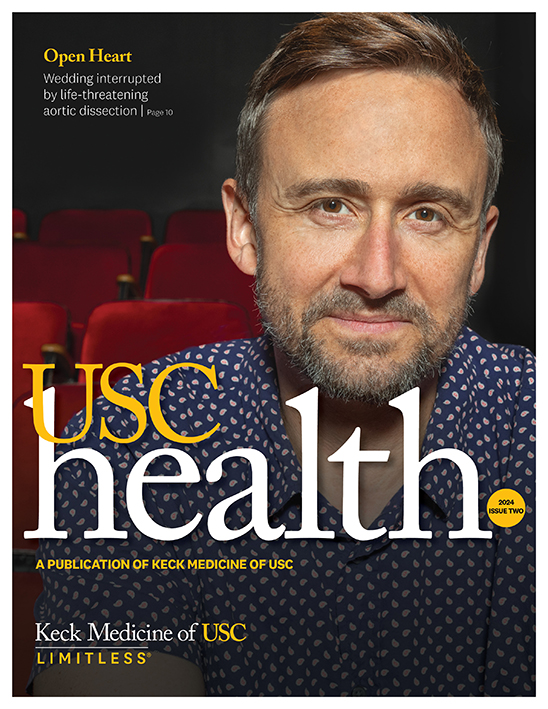
After Annie Cheung’s third child born at USC Arcadia Hospital required time in the NICU, her gratitude for the hospital became even greater.
The moment Annie Cheung and her husband James first saw USC Arcadia Hospital (USC-AH) nearly 10 years ago, they knew it was where they wanted their first child to be born — and their second and their third.
“It is very intimate and homey,” says Annie, who lives in Temple City, less than five miles from the hospital. “We wanted something close and easy to access. Those little things make a world of difference.”
The Cheungs’ first-born, Bradley, now 9, came into the world at six-and-a-half pounds without a hitch. Their second, Beckham, 6, matched him pound-for-pound three years later.
“Both times, it was a really good experience, no complications,” Annie says.
However, in August 2021, baby No. 3 — Bennett — would put the Cheung family, the hospital’s maternity care program and its Level II neonatal intensive care unit to the test.
Preeclampsia leads to premature birth
Around her 20th week of pregnancy, Annie developed a potentially dangerous condition called preeclampsia, characterized by persistent high blood pressure that can cause injury to the pregnant woman’s kidneys, liver, platelets, lungs and brain. It can also affect the baby’s growth, and put the baby at greater risk for preterm birth and stillbirth.
At 30 weeks, her blood pressure still high, Annie checked into USC-AH on her doctor’s recommendation. There, a trained labor and delivery team watched over her as she rested and underwent steroid treatments to encourage her baby’s lungs to grow.
Annie’s blood pressure remained high, putting both mother and child at further risk, so the medical team decided to induce the birth. “I was very anxious,” Annie says. “The last thing you want to do is deliver your baby when it’s not full term.”
The NICU nurses talked her through every step, reminding her “there were things out of my control,” she says. “That really helped with my anxiety.”
Bennett had his own ideas and shifted his position at the last minute, making a vaginal delivery risky. He was born at 32 weeks via emergency cesarean section, weighing 4 pounds, 6 ounces, with his lungs not yet fully developed and a small hole in his heart.
NICU nurses were present for his arrival.
“We work closely with the labor and delivery program and, along with respiratory therapists, attend all high-risk deliveries,” says Cindy Morrison, RN-C, a NICU nurse for 42 years — 35 of them at USC-AH.
Other members of the USC-AH maternity care team include physicians on call 24/7, OB technicians, social workers, pharmacists, dietitians and occupational therapists.
“I’ve worked in bigger institutions,” Morrison says, “but what I love about USC Arcadia Hospital is we have a more intimate relationship with families.”
“We are able to spend more one-on-one time with the babies,” says Hazel Galang, RN, another of Bennett’s nurses.

Nestled in an incubator in the NICU, Bennett was able to breathe on his own, but a respiratory therapist monitored his progress. A cardiologist checked in on him to assess his heart, which was beating a little fast.
Feeding specialists took charge of his nutrition, which he would receive via a feeding tube for the first three weeks of his life, after which he began learning how to breast- and bottle-feed.
“He was very, very little,” Annie says. “He just needed to grow at that point.”
She and James traded off bedside time with Bennett. They were experienced parents, but Morrison and Galang note that many in the NICU are first-timers.
Teaching new parents to care for their small charges — and giving them back a sense of control — is a big part of the nurses’ job. “At the beginning, some parents are nervous about holding their baby,” Galang says, “but they just need reassurance and support.”
Backyard playland for three kids
Now age three, Bennett started school this fall. Over time, the small hole in his heart healed on its own. He’s susceptible to colds and had pneumonia last year, but is otherwise healthy and energetic.
A fan of garbage trucks and LEGOs, Bennett “loves to copy everything and anything his oldest brother does right now,” Annie says. “He’s so fun. And funny!”
I’m so thankful for the support we had from the entire team at USC Arcadia Hospital.
Annie Cheung, patient, USC Arcadia Hospital
The three boys spend lots of time in their backyard mini-playland, which includes a trampoline, splash pad, soccer net and portable movie screen — all organized by Annie, who is developing an online travel accessories business for parents, and James, who works in human resources for Los Angeles County.
“I’m so thankful for the support we had from the entire team at USC Arcadia Hospital,” Annie says.
She and James want other parents to know one thing about its maternity services: “You’re in good hands. It feels like family.”
Interested in supporting the work of Keck Medicine? Visit this page.
Topics


